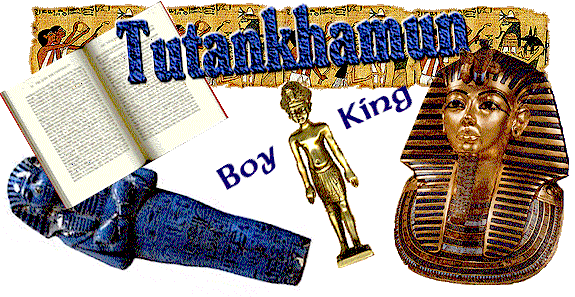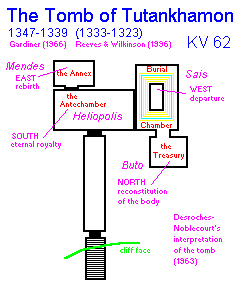

Of the nest of three coffins in the sarcophagus, the innermost was of solid gold, the outer two of wood overlaid with gold. The king's mummy lay in the midst of all this splendour with its famous gold mask but, by comparison, the actual remains of the king himself were pitiful, the result of poor embalming. Beyond the painted burial chamber (the only decorated room in the tomb), through an open doorway guarded by a large recumbent wooden figure of the jackal Anubis, lay the Treasury. Here stood the great canopic wooden shrine enclosing the calcite canopic chest. The chest held four jars containing Tutankhamun's viscera, whose human-headed lids were modelled in the likeness of the king. |
 |
 |
The tomb is far too small for a royal burial, and had almost certainly been granted as a royal favour to the elderly Ay in recognition of his signal service over the years. (There are other instances of high officials being granted a similar privilege of burial in the Valley of the Kings.) Because of the king's sudden demise, and the fact that this tomb was virtually ready, it was appropriated and steps immediately taken to decorate the burial chamber. |
Revised: November 12, 2009.
Copyright © 1997 by Anthony C. DiPaolo,
M.S. / Osiris Web Design.